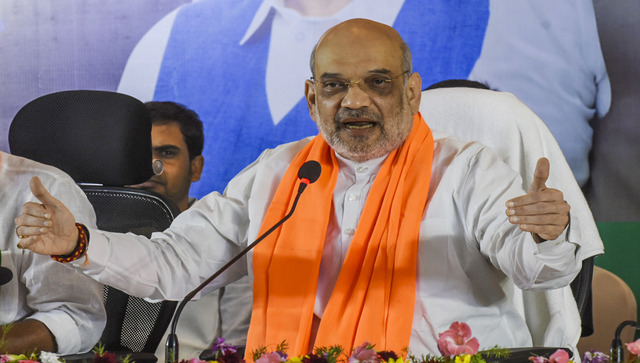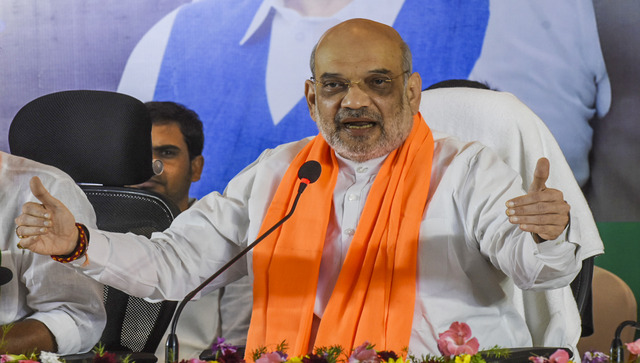For most people in Kolkata, Gurusaday Dutt is just the name of a street curving through an upscale leafy neighbourhood in the city. Few know that the civil servant it is named after bequeathed the city a treasure trove of folk art — intricate blankets or kanthas, patachitra scrolls, 17th century terracotta figures. Even fewer know that the museum — which opened in 1963 and is housed in a sprawling building in Joka on the fringes of the city amidst a mango orchard now heavy with fruit — is facing its darkest hour. Last year, the Ministry of Textiles which had supported it, stopped its funding and demanded that it be self-sufficient.
“I am completely nonplussed,” says Dr Bijan Mondal, the executive secretary of the Gurusaday Museum . “It’s like your father fed you for years and suddenly says, ’now leave tomorrow’. Even to fundraise, we need funds first. We haven’t paid the staff salaries for more than six months.”
If there’s a silver lining to this doomsday scenario, it is that in its moment of crisis, the museum has suddenly been rediscovered. There’s a citizens’ effort to try and save it. Bappaditya Biswas, creative partner at Byloom, a boutique well-known for helping revive India’s handloom sari traditions with a contemporary flair, discovered the museum when a Canadian client told him about it. Now he regularly brings foreign visitors to it. In some ways it’s more fascinating than the Indian Museum. “You see the kanthas, the moulds they used to make sweets,” he says. “It gives a glimpse of life.”
On the 136th birth anniversary of Gurusday Dutt on 10 May, there was a daylong event to “Love the Museum”, complete with a selfie booth — something hitherto unheard of at the museum. There’s now even a Facebook group — Save Bengal’s Folk History — with its own hashtag #SaveFolkMuseum.
Shrutakirti Dutta, a research scholar at Jadavpur University, started the group with a few likeminded friends. She admits she too hadn’t heard of the museum, until it was facing imminent closure. But when she visited it, she was amazed. “We know so much about the swadeshi movement or the 19th century Bengal Renaissance,” she says. “But this is a domestic history. There are molds to make aamsotto (mango leather) and sandesh. This is also the history of generations of women. Narrativising it is so very important.”
That is what is unique about this museum. In one gallery there are 11th century black stone images of Vishnu and Durga and Buddha. That could belong to any Indian museum. But the painted scrolls, the sandesh molds, the wooden toys, the blankets, the necklaces made out of rice grains are its true riches.
Like many Bengalis I grew up with my own kantha, made from torn saris. But it’s only at this museum that I realised how many kinds of kanthas there are — sujni, betan, durjani, khoka, lep, rumal to name just a handful. “The names all come from the purpose of the kantha,” says Subhankar Mandal, an art historian photographing the kanthas. “For example, the arshilata is the kantha used to cover the mirror, from aarshi or mirror and a _lata-_like a vine growing over it.” He says there is no museum that has so many kanthas telling so many stories. One, for example, holds up a mirror to 19th century Bengal’s babu-and-sahib society complete with bayonet and sword-wielding soldiers, elephants and a phaeton car, all painstakingly hand-stitched.
These were labours of love, made for near and dear ones. “You can think of it as the diary of a lady,” says Snehangshu Sekhar Das, a designer with the ministry of textiles. “It has her emotion, her selfless love. I remember one had the words ‘Aamay Jeno Bhulo Na (Do Not Forget Me Please)’ stitched into it.”
Gurusaday Dutt understood the importance of that plea. He documented the lyrics of the songs sung alongside the patachitra scrolls before they were forgotten. He took pains to record the names of some of the women (like Nirmala Sundari Devi and Mandasundari Dasya) who stitched these blankets, painted these scrolls — all without thinking of themselves as artists. Dutt’s civil service career allowed him to travel extensively and he collected some 2,500 objects to rediscover the folk traditions that were already disappearing. In 1932 he held an exhibition at the Indian Society of Oriental Art where Abanindranath Tagore marveled at the collection, hailing Dutt as a jeweller. Dutt left his collection to the Bengal Bratachari Samity he had formed, an organisation that tries to build national consciousness through folk traditions. His grandson Devsaday Dutt says he grew up with this collection. “It was in our house till I was about 11 or 12,” he remembers. “My grandfather came from rural Bengal. His attachment to it was something else. My father and I are urban. Neither of us can come close to that.”
Now as the museum faces an uncertain future, there are some rays of hope. When the Kolkata Metro expansion is complete, it will pass right by the museum. That will certainly make it more accessible — though it raises the question: does a city’s heritage only matter if it lives within its tourist-friendly precincts? Dutt deliberately bought this land outside the city, in what was then jungle, to be closer to rural Bengal. He wanted to build a training centre for folk artists and a cooperative.
Dr Mondal is surprised and moved at the many ways the city has reached out to help the beleaguered museum. Shrutakirti Dutta says Save Bengal’s Folk History is keen to do a crowdfunding campaign. Jayanta Sengupta, secretary-curator of the Victoria Memorial, a museum that sees a footfall of 3.6 million a year and growing, says he would be honoured to host the highlights of the Gurusaday collection at the Victoria Memorial as a way to “showcase the priceless collection". “Perhaps the next generation will be made aware,” Sengupta says.
But time is scarce. Already many of the paintings, some belonging to Jamini Roy and Abanindranath Tagore, the 18-panel scrolls telling stories from great poems are at risk in the muggy heat of Kolkata. “What climate control can we afford?” says Mondal ruefully. “When it is hot I can turn on the fan. When it rains, I keep the windows closed. Nothing more.”
He listens to the talk about footfall, marketability, reinvention, digital storytelling, audits, transparency and interactive displays with both attention and some nervousness. These are uncharted waters for a museum that existed on the fringes of both the city and its consciousness for decades.
“This event itself could be our turning point,” he says. “Though we must remember, if something is marketable, it becomes a handicraft. This is not a handicraft museum, this is a folk art museum. That’s what Gurusaday Dutt collected.”
“Folk art should stay in a folk museum,” agrees Devsaday Dutt as he walks past a garlanded statue of the grandfather he never saw. “See, I have no ownership in this. My grandfather did not leave any of this to us. It belongs to the nation. Let’s see if the nation treats it as its heritage.”


)




)
)
)
)
)
)
)
)